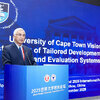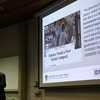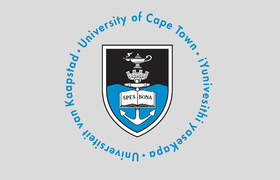The 2026 budget process
14 October 2025 | Mr Vincent Motholo, CFO
Dear colleagues and students
As we embark on the 2026 budget process, I wish to share with you the journey we are undertaking and the principles guiding our financial planning for the year ahead.
The annual budget process for Council-controlled activities is a rigorous and collaborative effort that begins in June with the distribution of budget guidelines to all budget heads. This process culminates in Council approval in December, assuming all proceeds as planned.
By the end of August, the Finance Department received submissions for both operating budgets and capital and strategic initiatives. These were consolidated into a first budget iteration. Throughout September, the Planning and Budgeting Working Group – chaired by myself and comprising members of the executive, two nominated deans, and representatives from Finance, the Office of the Vice-Chancellor, and the Institutional Planning Unit – engaged with each budget head to review and interrogate their submissions.
The Resource Allocation Advisory Group (RAAG), chaired by the vice-chancellor, has been convening since 29 September through October to consider the full scope of the 2026 budget proposal. This includes a review of operating budgets, prioritised capital expenditure, strategic investments, anticipated net investment income and our current cash position. This is a complex and multi-dimensional process requiring careful balancing of competing priorities.
RAAG’s recommendations will inform the final budget proposal to be presented to the University Finance Committee in November and, ultimately, to Council for approval in December.
We acknowledge that the university continues to face financial constraints, primarily due to our inability to achieve the operating surpluses targeted in the Council-approved finance policy. This limitation affects our capacity to reinvest meaningfully in infrastructure and strategic initiatives that advance our mission and vision.
In response, the executive has adopted a cash-neutral budgeting approach for 2026, consistent with the strategy employed in 2025. This approach aims to avoid further strain on our cash reserves while cautiously reinstating some activities paused in the current year, measures that were necessary to contain costs.
The first consolidated iteration of the General Operating Budget reflects a deficit of R115 million, while the Capital and Strategic Budget stands at R400 million. With net investment income projected at approximately R200 million, this scenario would result in a cash erosion of around R300 million. To mitigate this, we must improve the overall budget position by R300 million, balancing operating and strategic priorities. At a minimum, R200 million in capital and strategic reinvestment is required to safeguard the academic project and address critical risks.
Achieving this will demand difficult compromises and trade-offs. Key to our success will be exercising financial discipline and ensuring accountability in managing the budget. Every decision must be guided by our shared commitment to sustainability, transparency and the long-term health of our institution.
I thank all colleagues involved in this process for their diligence and thoughtful engagement.
Together, we will navigate these challenges and continue to build a resilient and forward-looking university.
Sincerely
Vincent Motholo, CA (SA)
Chief Financial Officer
Read previous communications:
 This work is licensed under a Creative Commons Attribution-NoDerivatives 4.0 International License.
This work is licensed under a Creative Commons Attribution-NoDerivatives 4.0 International License.
Please view the republishing articles page for more information.









